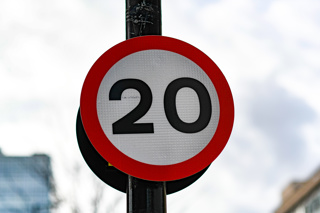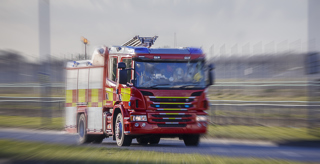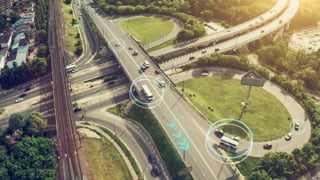The Metropolitan Police Service has been helping camera company Roadhawk develop the next generation of in-cab cameras for fleets as a weapon against insurance fraudsters.
Motor fraud – including systematic crash-for-cash scams – costs the UK £410 million a year, of which £93m involves commercial policies, and Roadhawk camera footage has helped the Met to mount cases against crash-for-cash gangs.
Meanwhile, the police force has been helping Roadhawk make the camera more adept at picking up registration plates from a distance and reducing camera vibration through Electronic Image Stabilisation (EIS), together with a higher frame rate and other technical advances.
Mark Nelson, managing director of Roadhawk, says a major selling point of the cameras is their ability to defend fleets against no-fault claims which would otherwise be settled 50-50 for lack of evidence or to avoid the cost of litigation.
The cameras record on a loop to an SD card, but will save data if triggered by a G-force event such as a collision or manual activation.
Towergate Insurance, which underwrites heavy fleets, part funds Roadhawk and Novus cameras for clients. It has had 7,500 cameras installed so far and managing director Larry Smith said: “We have saved £500,000 to £750,000 in the past 12 months for insurers .”
It is also encouraging professional drivers to record any illegal driving they witness with its ‘hauliers fight back’ film-and-shame campaign.
In-cab cameras have several advantages. The act of observation makes drivers more cautious; forward-facing cameras can act as a digital witness in the event of collision; near-miss data can be captured as a training aid; and even at-fault collisions can be settled faster.
Most cameras cost between £200 to £300 with fleet discounts available. Suppliers point out this is less than the insurance excess on most vehicles so return on investment is rapid.
Insurers and brokers are slowly coming round to the idea that cameras are a foolproof way of cutting soaring insurance costs.
Ian Foy, CEO of Equity Insurance Group, said Equity RedStar wanted to offer a straightforward, no-subscription product “to proactively manage their exposure to particular risk types”.
He continued: “After extensive research of the products available to provide evidence to exonerate drivers in the event of a collision, we considered Roadhawk camera systems to be an ideal solution. The event file video footage has greatly assisted our claims handlers in achieving successful liability outcomes. It is also an important tool to assist our continued drive to combat claims fraud as view the incident scene.”
However, Roadhawk is not the only camera fulfilling this function. Brigade Electronics produces a range of camera products for fleets of all weight ranges. Its rear-view and side-view cameras are an option on Ford’s accessories list. This kind of camera is all about prevention.
However, Brigade does also offer recording devices. Tom Brett, marketing director, said one product of particular use to the fleet car market is DualVision, a device which sits near the rear-view mirror. It has two cameras, offering backward and forward views.
Eyedrive Systems also offers a camera system. Its vision-based technology identifies other road users, including speed, distance and trajectory, and monitors their position relative to the vehicle, giving audible alerts if the driver comes within a specific time interval (eg. two seconds) of another object without taking appropriate action.
Eyedrive is intended to defeat driver inattention and prevent collisions, although a recorder can be fitted to capture footage as well.
Technology ‘should pay for itself’
Stratford-upon-Avon-based FPS Distribution, which runs a fleet of 300 Citroën Berlingos and Vauxhall Vivaros, chooses camera technology to lower its premiums.
“Our vans are contracted to run 50,000 miles a year delivering automotive parts,” said fleet manager Stuart Collett.
“We trialled the Roadhawk cameras at one depot and now have now rolled it out across the fleet with the approval of Brit Insurance.”
Collett said that, although in the future it may be used as a training aid, the cameras should pay for themselves by proving liability in those cases where the company driver is not at fault, but which would otherwise be settled on a 50-50 basis for lack of evidence.
He said: “Already we have had a couple of incidents where the other party has claimed our driver was at fault and we could say ‘we have caught the incident on camera’.
“The cameras give us clarity about what happened. It will also prevent fraudulent claims which have become an increasing trend in the UK.”



















Pulse326 - 23/12/2011 08:07
Why not try cameras by using a phone app? I've got Witness Driving on my iPhone. For 69p I can film, track speed, GPS location and G-forces. The new iPhone 4S has an HD camera that will pick up number plates from quite a distance.